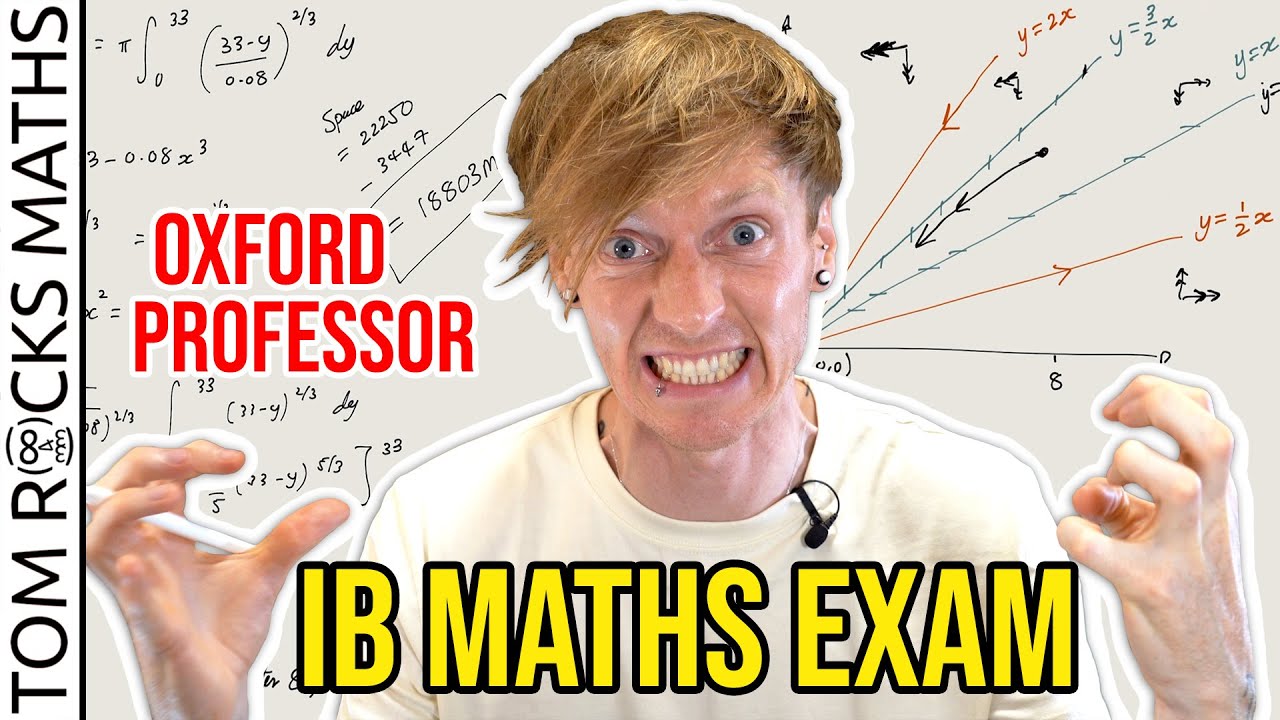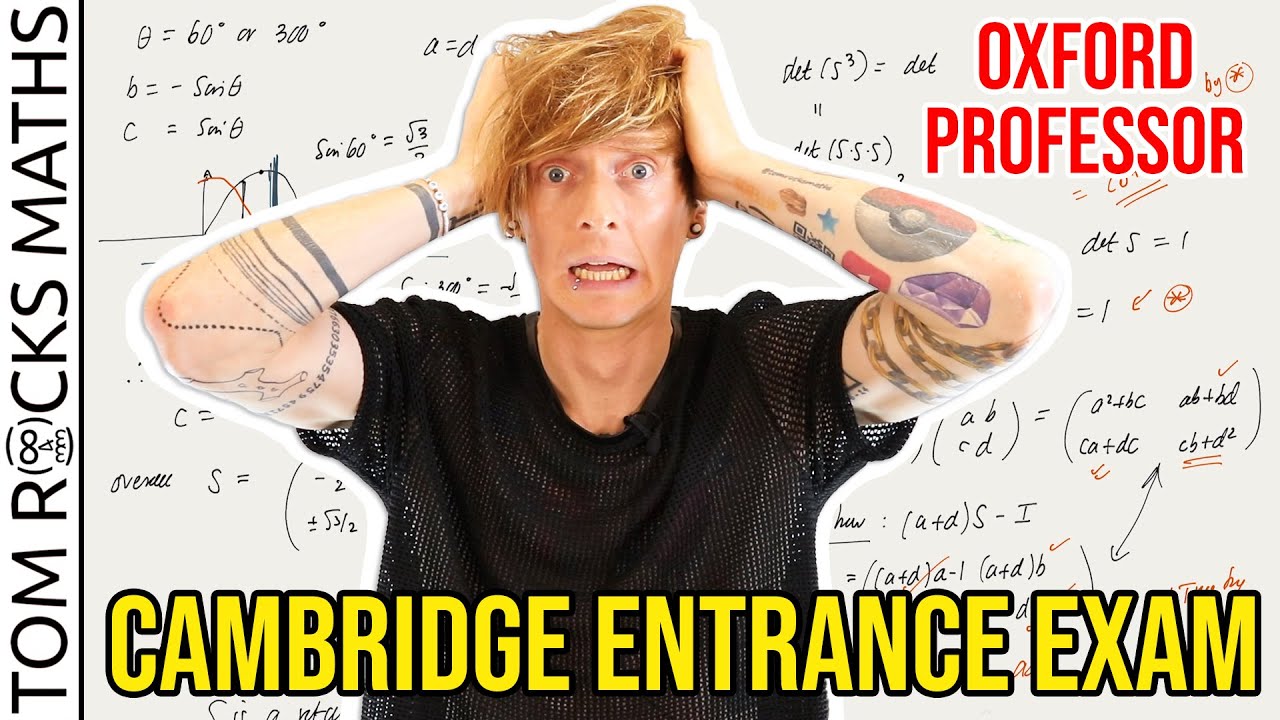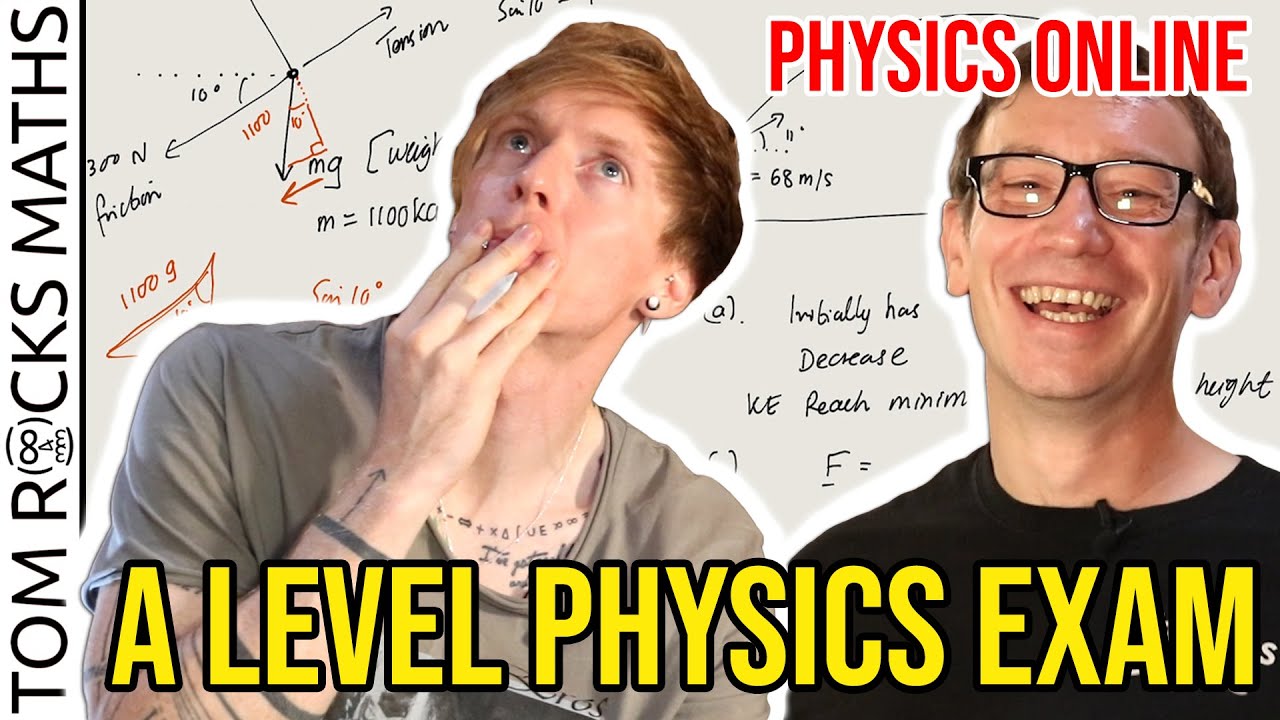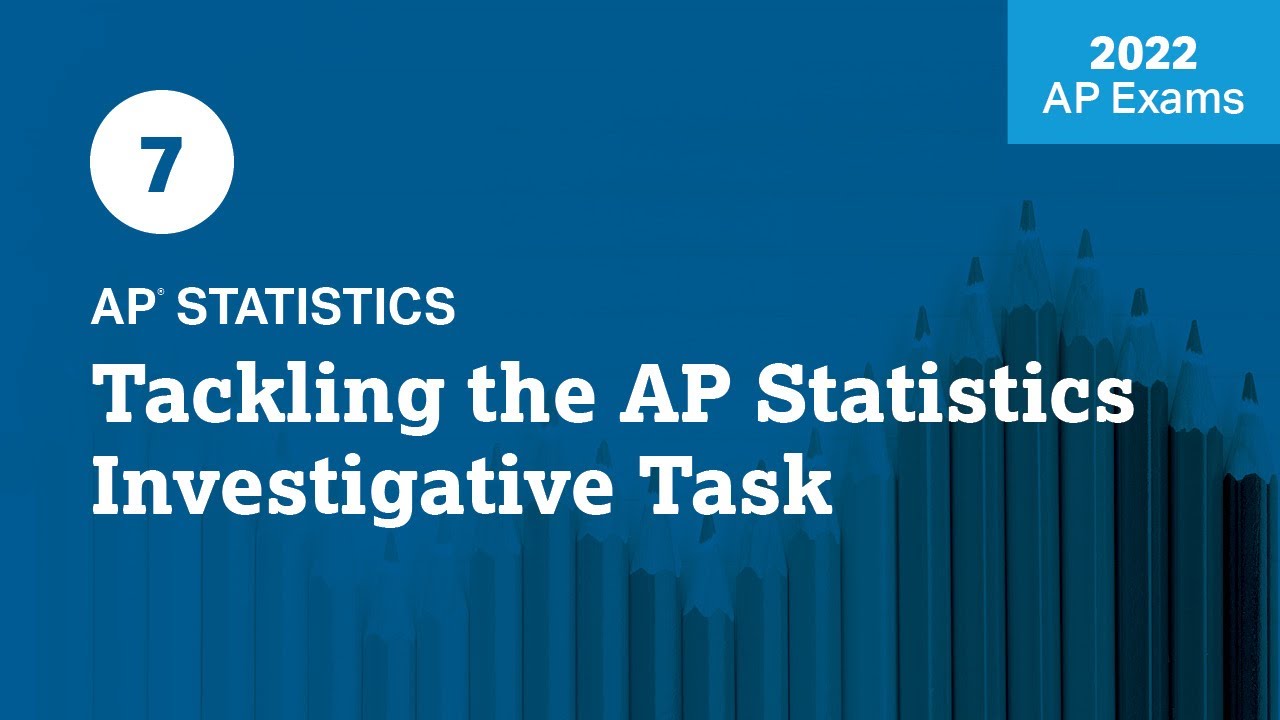Oxford University Mathematician takes American AP Calculus BC Math Exam
TLDRDr. Tom Crawford from the University of Oxford takes on the American AP Calculus exam, discussing its significance for high school students aiming for college credit. He navigates through various complex problems, including calculating derivatives, analyzing points of inflection, and tackling volume computations for conical shapes. Despite some minor rustiness with the ratio test, he scores 34 out of 36, reflecting a strong understanding of calculus concepts and their applications.
Takeaways
- 📚 Dr. Tom Crawford from the University of Oxford takes the American AP Calculus exam, showcasing the exam's structure and difficulty.
- ⏰ The AP Calculus BC exam lasts for 3 hours and 15 minutes, with 45 multiple-choice questions and six free-response questions.
- 📊 Dr. Crawford approaches question three by analyzing the graph of a derivative and applying knowledge of calculus to find function values and points of inflection.
- 🧠 He uses integration and areas to determine the values of F(N) and F(5), demonstrating a strong understanding of calculus concepts.
- 📈 In question four, Dr. Crawford approximates the rate of change of the radius of a melting ice sculpture, applying the concept of derivatives to a real-world scenario.
- 🌋 He successfully uses the intermediate value theorem to argue that the radius's rate of change must pass through a specific value, showcasing logical reasoning.
- 🔢 Dr. Crawford uses the Riemann sum to approximate the value of an integral, demonstrating numerical analysis skills.
- 📂 In the final question, he applies the ratio test to determine the interval of convergence for a power series, highlighting his knowledge of series.
- 🎓 The video provides insight into the AP Calculus BC exam, which is designed to challenge students with college-level math courses while still in high school.
- 📝 Dr. Crawford's thorough analysis and step-by-step problem-solving approach serve as an excellent example for students preparing for the AP Calculus exam.
- 📊 The video also offers a glimpse into the exam's marking scheme, providing viewers with an understanding of what is required to earn marks for each section.
Q & A
What is the total duration of the AP Calculus BC exam?
-The total duration of the AP Calculus BC exam is 3 hours and 15 minutes.
How many multiple-choice questions are in Section 1 of the AP Calculus BC exam?
-There are 45 multiple-choice questions in Section 1 of the AP Calculus BC exam.
What is the time allocated for Section 2 of the AP Calculus BC exam?
-Section 2, which focuses on free-response questions, has a duration of 90 minutes.
What does the AP program allow high school students to do?
-The AP program allows high school students to take college-level courses, which can help them skip some introductory courses once they start college or university.
How many math courses are available to choose from in the AP program?
-There are five math courses available to choose from in the AP program.
What is the significance of the point x=2 in the context of the derivative graph discussed in the script?
-The point x=2 is significant because it is identified as a potential point of inflection based on the change in the derivative's behavior from increasing to decreasing.
What is the role of the intermediate value theorem in the discussion about the function's behavior?
-The intermediate value theorem is used to justify that since R' is continuous and differentiable (implied by twice differentiability), it must pass through a value of -6 between x=0 and x=3, as it changes from -6.1 to -5.
What is the volume of the cone calculated in Part D of the script?
-The volume of the cone calculated in Part D is -70,000/3 * pi cubic centimeters per day, indicating a decrease in volume as the cone melts.
How does the script describe the process of finding the absolute minimum value of a function?
-The script describes the process of finding the absolute minimum value of a function by identifying the intervals where the function is decreasing, and then determining the minimum value at the end of that interval, which in this case is at x=5.
What is the significance of the ratio test in the context of the power series discussed in the script?
-The ratio test is significant as it is used to determine the interval of convergence for the power series. The script shows that the series converges when the modulus of x is less than 1, which is between -1 and 1.
What was the total score achieved by the speaker in the non-calculator section Part B of the free response questions section two of the AP Calculus BC Exam?
-The speaker achieved a total score of 34 out of 36 in the non-calculator section Part B of the free response questions section two of the AP Calculus BC Exam.
Outlines
📝 Introduction to AP Calculus BC Exam
Dr. Tom Crawford introduces himself and the context of the American AP Calculus BC exam, highlighting its popularity among high school students and its role in college applications. He explains the exam structure, which includes multiple-choice and free-response sections, and mentions his plan to tackle Part B of the free-response section without a graphical calculator.
🧠 Solving Derivative Graph Problems
Dr. Crawford begins solving the first free-response question, which involves analyzing a graph of a derivative function. He discusses the peculiarity of starting on question three and explains his approach to understanding the problem by copying the graph and annotating it. He then proceeds to calculate F of not and F of five, using the given derivative graph and integrating F Prime to find the function values at specific points.
🔍 Identifying Points of Inflection
In the next part, Dr. Crawford focuses on finding the x-coordinates of all points of inflection for the graph of the function f. He explains the concept of points of inflection and how they relate to changes in the gradient of the function. He uses the graph of f Prime to identify points where the gradient changes from positive to negative or vice versa, concluding with the identification of two points of inflection at x = 2 and x = 6.
📉 Determining Decreasing Intervals for Function G
Dr. Crawford moves on to Part C, where he defines a new function G as the difference between f and x. He calculates when G is decreasing by finding the intervals where G Prime is negative, using the graph of f Prime. He concludes that G is decreasing for x between 0 and 5, and again for x between 5 and 7, providing a clear analysis of the function's behavior.
🏆 Finding the Absolute Minimum Value of Function G
In the final part of his exam walkthrough, Dr. Crawford addresses Part D, which involves finding the absolute minimum value of the function G on a given interval. He uses the information from Part C to determine that the minimum value occurs at x = 5. He then calculates the value of G at this point, considering the function's behavior and its derivative, and concludes with the absolute minimum value of G.
📊 Approximating Derivative Values and Applying the Intermediate Value Theorem
Dr. Crawford tackles a new question involving the average rate of change of a function's derivative over an interval and the application of the Intermediate Value Theorem. He approximates R Prime of 8.5 using the average rate of change between 7 and 10, showing the computations and units involved. He then confirms the existence of a time t for which R Prime of t equals -6, using the theorem and the continuity of the derivative function.
🌋 Calculating with Riemann Sums and Determining the Rate of Change for a Cone's Height
Dr. Crawford continues with a question about a conical ice sculpture, focusing on the radius and height's rate of change over time. He uses the given data to approximate the integral of R Prime of T using Riemann sums and calculates the height's rate of change at a specific time. He then finds the rate of change of the cone's volume with respect to time at a given moment, applying calculus concepts to the melting pattern of the ice sculpture.
📈 Integrating and Differentiating Power Series and Finding Volumes
In the final question, Dr. Crawford deals with power series, convergence, and volumes of solids. He uses the ratio test to find the interval of convergence for a given power series and calculates the volume of the solid formed by revolving an unbounded region around an axis. He also finds the volume of a solid by integrating a density function and term-by-term differentiation of a power series, applying calculus and series concepts to solve the problems.
🎓 Reflecting on the AP Calculus BC Exam Experience
Dr. Crawford concludes his video by reflecting on his experience taking the AP Calculus BC Exam. He marks his own answers, providing a self-assessment of his performance and discussing the difficulty level of the exam in comparison to other standardized tests. He shares his thoughts on the exam's content, the process of solving the problems, and his overall impression of the experience.
Mindmap
Keywords
💡AP Calculus BC Exam
💡Free Response Section
💡Derivative
💡Integral
💡Points of Inflection
💡Volume of Revolution
💡Power Series
💡Ratio Test
💡Convergence
💡Term by Term Differentiation
💡Geometric Series
Highlights
Dr. Tom Crawford takes the American AP Calculus exam at the University of Oxford.
The AP Calculus BC exam is the most challenging of the five math courses available in the AP program.
The exam is split into two sections: multiple-choice questions and free-response questions.
Dr. Crawford focuses on Part B of the free-response section, which involves solving four calculus problems without a calculator.
The first problem involves analyzing the graph of a derivative and finding the function values at specific points.
Dr. Crawford uses the piecewise continuous graph of the derivative to deduce the original function and its points of inflection.
The second problem requires finding the x-coordinates of all points of inflection for the graph of the function f.
Dr. Crawford applies the concept of inflection points and the behavior of the derivative to identify the points of inflection.
The third problem involves a new function G and determining the intervals where G is decreasing.
Dr. Crawford calculates the derivative of G and uses it to find the intervals of decrease, demonstrating understanding of function behavior.
The final problem of Part B tasks Dr. Crawford with finding the absolute minimum value of function G on a given interval.
Through a step-by-step analysis, Dr. Crawford determines the absolute minimum value and justifies his solution.
Dr. Crawford's approach to the problems showcases his proficiency in calculus and problem-solving techniques.
The video provides insights into the AP Calculus BC exam, offering a glimpse into the complexity and depth of high school mathematics in the United States.
Dr. Crawford's commentary throughout the exam highlights the importance of understanding the underlying concepts and the logic behind mathematical procedures.
The video concludes with Dr. Crawford scoring 34 out of 36 for Part B of the free-response section, demonstrating a high level of accuracy and understanding.
Transcripts
Browse More Related Video

Oxford University Mathematician takes High School IB Maths Exam

Can ChatGPT Pass the Oxford University Admissions Test?

Oxford University Mathematician takes High School GCSE Further Maths Exam

Oxford University Mathematician takes Cambridge Entrance Exam (STEP Paper) PART 1

Can an Oxford University Mathematician solve a High School Physics Exam? (with @PhysicsOnline)

2022 Live Review 7 | AP Statistics | Tackling the AP Statistics Investigative Task
5.0 / 5 (0 votes)
Thanks for rating: